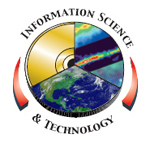
Please Note: The content on this page is not maintained after the colloquium event is completed. As such, some links may no longer be functional.
Richard Lyon 
Coronagraphic Methods for Dectetion of Extrasolar Planets
Wednesday, February 25, 2004
Building 3 Auditorium - 3:30 PM
(Refreshments at 3:00 PM)
Mr. Richard G. Lyon, will talk about Coronagraphic Methods for Detection of Extrasolar Planets. It is nearly within our grasp to directly detect Jupiter- and Earth-like planets and to spatially resolve them from the central star with enough photometric sensitivity to identify molecular species including greenhouse gases, estimate orbital parameters, and determine the distribution of exo-planets in our solar neighborhood. Two primary approaches are under consideration for anticipated space-based extrasolar planet search missions: (i) visible (reflected) light coronagraphy and (ii) IR (emitted) nulling interferometry. Which method will be the most viable is still an active area of research. This talk will give a brief overview of the two approaches followed by a detailed overview of a series of coronagraphic approaches that we are currently evaluating via parallel Beowulf computer models.
Coronagraphy refers to a set of methods for tapering the structure of the diffractive optical point spread function (the systems response to an unresolved stellar source) and/or producing very dark regions (nulls) within it. It is in these dark regions where we will look for planets. Coronagraphs can be achieved by combining various sophisticated diffractive methods: a) shaped, apodized or coded apertures, b) internal and external occulters, c) a series of masks at specific diffraction planes, or d) judicious choice of the curvature of the optics. A brief overview of the most promising new techniques will be given, including the theory underlying each method, and the effects of an imperfect system. A computational comparison of the various methods is made in terms of a set of prescribed metrics.
Some of the coronagraphic methods to be discussed include:
Apodized Square Apertures
Spergel/Kasdin/Vanderbei apertures
Internal occulters (Lyot Coronagraph)
External occulters
Labeyrie coronagraph
Shao shearing coronagraph
Also to be discussed are the various sources of errors, which include wavefront errors, amplitude errors and polarization effects as well as scalar and vector diffraction theory.
Richard Lyon is an optical scientist at the NASA/Goddard Space Flight Center in the Applied Information Sciences Branch and conducts research in computational optics, imaging science, complex instrument systems and optimal information extraction data analysis, with applications in space missions. These include the areas of coronagraphy phase retrieval, phase diversity, wavefront sensing, optical control systems, interferometric and sparse imaging, and maximum entropy image deconvolution. Mr. Lyon has pioneered developments in advanced optical and imaging systems and algorithms for both Earth and Space sciences.
Previously Mr. Lyon was a Research Scientist for the Electrical Engineering Department at the University of Maryland and associated with the Center for Excellence in Space Data and Information Science (CESDIS) at NASA/GSFC . Richard Lyon is an active researcher in the areas of image restoration, image processing, phase retrieval and optical sciences. Past research activities have included developing massively parallel maximum entropy algorithms for image restoration, application of the maximum entropy algorithms to restore aberrated Hubble Space Telescope (HST) images on massively parallel computers, application of multiple phase retrieval methods to recover unknown HST optical parameters, development of a high fidelity wavefront propagation model of the HST to model noise free optical point spread functions, and researching methods of wavefront sensing and optical control for segmented aperture telescopes. An example of which may be the Next Generation Space Telescope (NGST) Research the use phase retrieval in conjunction with an on-board supercomputer to periodically maintain alignment of NGST. Mr. Lyon also conducted a wavefront sensing and optical controls study for the Developmental Comparative Active Telescope Testbed (DCATT). This testbed is a 1 meter segmented aperture telescope with an active optical bench developed with the purpose of quantitatively testing and comparing various phase retrieval methods with interferometry and Shack-Hartmann sensing. Mr. Lyon is an Optical Scientist and co-founder of the Optical Systems Characterization and Analysis Research (OSCAR) Project at NASA/GSFC.
Mr. Lyon previously developed image-processing algorithms on parallel processors for the Air Force Phillips Lab. Prior to this, Richard Lyon was an Optical Systems Engineer for Hughes Danbury Optical Systems and was involved in the Hubble Space Telescope, Chandra/Advanced X-Ray Astrophysics Facility, and Far Ultra-violet Spectroscopic Explorer programs. Richard Lyon developed many of the algorithms, which were used to focus and deduce the optical aberrations and misalignments of the HST following launch. Mr. Lyon was also principal investigator of the Hughes Danbury optical phase retrieval effort.
Mr. Lyon holds BS in Physics from the University of Massachusetts and MS in Optics from the University of Rochester's Institute of Optics. Mr. Lyon also completed all requirements, except thesis, for a PHD in Optics from the University of Rochester. Mr. Lyon has received ten NASA awards for work on the Hubble Space Telescope, James Webb Space Telescope and other missions and is a member of the Optical Society of America (OSA) and the Society for Photo-Instrumentation Engineers (SPIE).
IS&T Colloquium Committee Host: Ben Kobler
